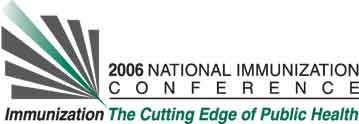Mary McCauley, Shannon Stokley, John M. Stevenson, and Daniel B. Fishbein. National Immunization Program, Centers for Disease Control and Prevention, 1600 Clifton Road, NE, MS E-52, Atlanta, GA, USA
Learning Objectives for this Presentation:
By the end of the presentation participants will be able to discuss the proportion of adolescents age 11 - 12 who need vaccine, the proportion who receive it, and how this measure relates to coverage measures typically reported.
Background:
Understanding the capacity of the healthcare system to vaccinate adolescents is essential as more vaccines are developed that will be recommended for them.
Objectives:
Assess rates of routine and catch-up vaccination at ages 11 - 12.
Methods:
We used data from the National Health Interview Survey, 1997 - 2003. According to CDC, 11- to 12-year olds should receive: a Td booster (recommended in 1995); a second dose of MMR (1989) and the HepB series (1995), if needed. We examined rates of vaccine administration at ages 11 and 12 by birth cohort (adolescents born 1979 - 1989, vaccinated 1990 - 2001). Analyses were restricted to data from hand-held vaccination records.
Results:
The number of hand-held records per birth cohort averaged 280 (range: 49 - 450, approximately 20% of those sampled). Among birth cohorts, the range for Td administration was 2.5% - 10% at ages 11 - 12. Among those needing HepB, the range of receipt by birth cohort was .5% - 26%; coverage increases were noted beginning in 1996. Of those needing MMR, 20% - 33% received it at ages 11 - 12; data were unavailable to detect an impact of the 1989 recommendation.
Conclusions:
Some recommendations appear to impact provider practice for adolescents in a very short time. For Td, some providers may have continued to administer the booster at ages 14 – 16, as previously recommended and required by law in some states. Additional efforts are required to make sure that adolescent immunization is treated as a priority, just like that for infants and toddlers.
See more of Adolescent Immunization Coverage 1997–2005: Did Anything Change?
See more of The 40th National Immunization Conference (NIC)

